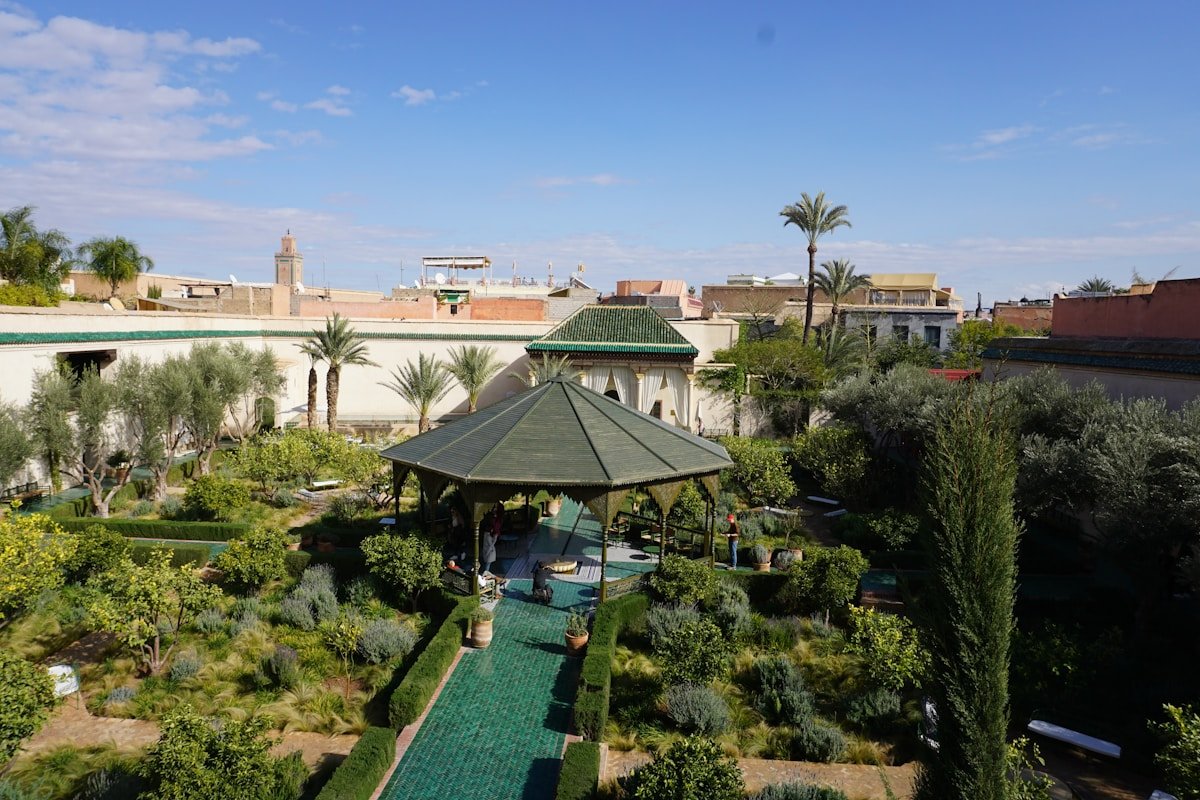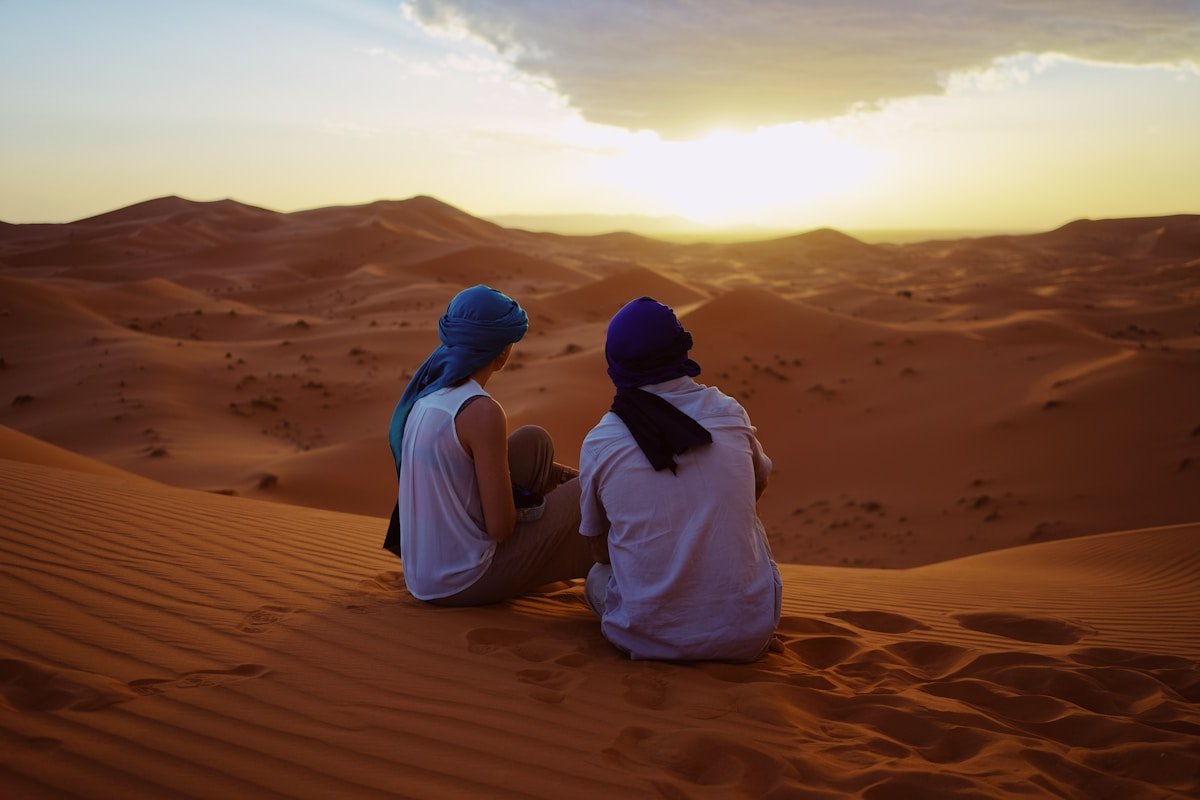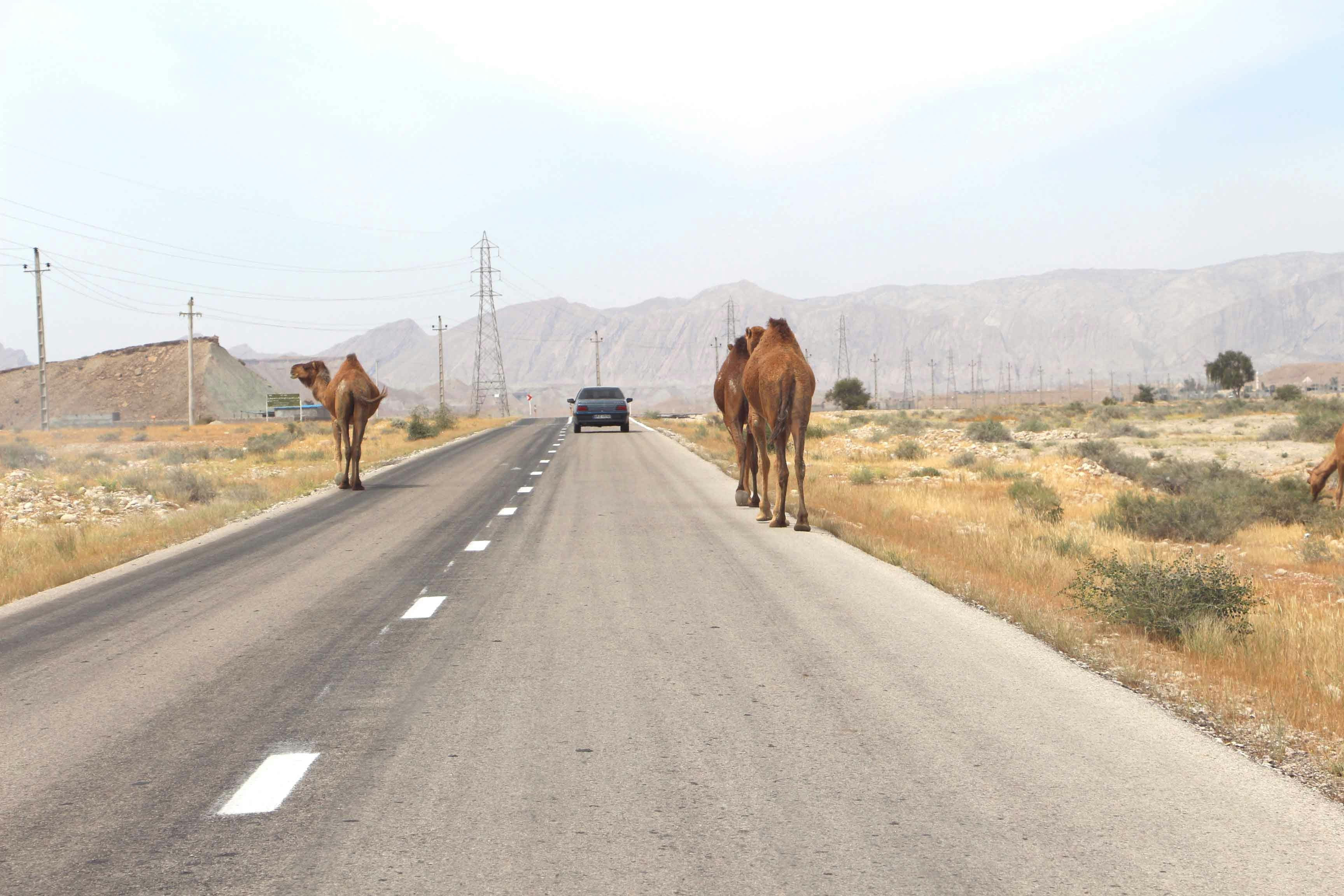Introduction to Morocco’s Diverse Landscape
Morocco, a North African gem located at the crossroads of Europe and Africa, boasts a stunning geographical tapestry that draws travelers from all over the globe. Its diverse landscape is an amalgamation of dramatic mountain ranges, sprawling deserts, and vibrant cities, each offering a unique glimpse into the country’s rich cultural heritage. The diverse terrains present in Morocco are not only visually captivating but also serve as a testament to the country’s ecological variety and historical significance.
Starting from the rugged Atlas Mountains, where snow-capped peaks touch the sky, travelers can experience the breathtaking beauty of nature. These mountains are home to various Berber communities, presenting an opportunity for visitors to discover the traditional ways of life that have flourished in this region for centuries. As one descends from the heights of the mountains, the scenery transitions into lush valleys and picturesque oases, showcasing the natural bounty that thrives in Morocco’s unique climate.
In contrast to the cool mountains, the country also features vast deserts, most notably the Sahara Desert, where undulating sand dunes stretch as far as the eye can see. The Sahara’s imposing beauty captivates adventurers seeking a truly immersive experience, offering opportunities for activities such as camel trekking and stargazing beneath a blanket of twinkling stars. Furthermore, the landscapes of Morocco are adorned with vibrant cities like Marrakech and Fes, which serve as cultural centers rich in history, art, and architecture.
The alluring charm of Morocco’s diverse landscape, along with its distinct cultural tapestry, provides the perfect backdrop for a memorable road trip adventure. Each stop along the journey reveals another layer of the country’s allure, urging travelers to explore and appreciate the marriage of nature and culture that defines this extraordinary destination.
Essential Tips for Road Tripping in Morocco

Embarking on a road trip in Morocco offers a unique opportunity to explore the country’s rich culture and diverse landscapes. However, understanding the essential driving regulations and preparing for the journey is crucial for a successful experience. First and foremost, it’s important to recognize that driving in Morocco can differ significantly from other regions. The country drives on the right side of the road, and it is advisable to familiarize oneself with the local regulations, such as speed limits and parking rules, to avoid any penalties. Speed limits are typically set at 120 km/h on highways, 100 km/h on main roads, and 60 km/h in urban areas.
Another key aspect to consider is the road conditions. While major highways and urban roads are generally well-maintained, rural areas may present a host of challenges such as potholes and insufficient signage. Travelers planning to explore the countryside should opt for a sturdy vehicle, preferably a four-wheel drive, to ensure better handling on uneven terrain. Additionally, renting a car is a popular choice for many visitors; be sure to familiarize yourself with rental agreements and insurance options. It is wise to book in advance and check for any additional fees that may apply.
Language barriers can be a concern when navigating Morocco, as Arabic and Berber are the primary languages spoken. However, French is widely understood, especially in urban areas, making it helpful for communication. Learning some basic phrases in Arabic or French can greatly enhance your interactions with locals and provide useful assistance, especially when asking for directions or recommendations.
Lastly, prioritize safety by keeping doors locked and windows up while driving, particularly in populated urban centers where petty theft can occur. Furthermore, carrying a map or a GPS device can be invaluable, especially in remote areas where signal may be patchy. By following these essential tips, travelers can navigate Morocco’s roadways with confidence and fully embrace the remarkable sights that await them.
Starting Point: The Enchanting Streets of Chefchaouen

Chefchaouen, often referred to as the “Blue Pearl” of Morocco, captivates visitors with its stunning blue-washed streets and breathtaking mountain backdrop. This charming town is situated in the Rif Mountains, offering an ideal starting point for your Moroccan road trip. Strolling through its alleyways, travelers will encounter a plethora of hidden gems, including artisan shops, local cafes, and historical landmarks that showcase the town’s rich cultural heritage.
One of the must-visit spots in Chefchaouen is the Medina, a vibrant area where the blue-painted buildings create a picturesque ambiance, perfect for photography enthusiasts. The vibrant hues change throughout the day, offering unique lighting opportunities at various times. Another significant landmark is the Kasbah, an impressive structure that houses a museum displaying local artifacts and offering beautiful garden views, enhancing the overall charm of the city.
For those looking to immerse themselves further in local culture, the bustling souks provide an excellent opportunity to shop for handcrafted goods, including textiles, pottery, and traditional Moroccan crafts. Many local legends speak of the city’s origins, intertwining the history with the surreal scenery that surrounds it. Among these tales is the myth that the town was founded by Jewish exiles who painted the walls blue to resemble the sky and remind them of their homeland.
Nature enthusiasts will find plenty to explore outside the town’s limits. The nearby Rif Mountains offer trails perfect for hiking. The impressive views from these trails create a stunning contrast with the indigo streets below, making it an excellent spot for both adventure and relaxation. Thus, Chefchaouen stands as a captivating starting point for any traveler, combining breathtaking visual aesthetics with an abundance of culture and natural beauty at every turn.
Exploring the Rif Mountains: A Scenic Drive to Tetouan

The journey from Chefchaouen to Tetouan is not merely a journey; it is an opportunity to experience the breathtaking beauty and rich cultural heritage of the Rif Mountains. As travelers embark on this scenic drive, they are greeted with panoramic views of lush green valleys, towering mountain peaks, and the vibrant blue of Chefchaouen itself. The road meanders along steep cliffs and picturesque landscapes, making it one of the most visually stunning routes in Morocco.
During the drive, several viewpoints along the way offer perfect photo opportunities, allowing travelers to capture the essence of the Rif Mountains’ natural beauty. One particularly popular stop is the viewpoint overlooking the Talassemtane National Park, where hikers can immerse themselves in the serene environment filled with diverse flora and fauna. The park is an ideal spot for those interested in hiking, with trails that cater to both beginners and experienced trekkers. Exploring these trails not only rewards visitors with spectacular views but also allows them to witness the untouched beauty of Morocco’s northern wilderness.
<pin
This journey from Chefchaouen to Tetouan through the Rif Mountains not only showcases Morocco’s remarkable landscapes but also presents an opportunity to connect with the local way of life. The scenic drive can enrich one’s travel experience, making it a must-explore route on any Moroccan road trip.
Fes: The Historic Heart of Morocco

Fes, often hailed as the historic heart of Morocco, is a city steeped in rich cultural heritage and history. Nestled in the northern part of the country, Fes was founded in the 8th century and has since remained a significant center of Islamic learning and culture. Its UNESCO-listed Medina, known as Fes el-Bali, is one of the world’s largest car-free urban areas and features a labyrinth of narrow streets filled with vibrant souks, stunning architecture, and traditional crafts. As you navigate through, you will encounter skilled artisans creating everything from intricate ceramics to exquisite leather goods.
The Medina is a treasure trove for travelers who appreciate history and craftsmanship. Noteworthy landmarks include the Bou Inania Madrasa, showcasing stunning zellige tilework and a picturesque courtyard, and the Al-Qarawiyyin Mosque, considered the oldest existing, continually operating higher educational institution in the world. Visitors can immerse themselves in the local culture by wandering through the souks, where spices, textiles, and handmade items beckon. Each shop offers a glimpse into the traditional Moroccan lifestyle, making for an enriching experience.
Culinary exploration should not be overlooked when in Fes. The city boasts a distinctive food scene that marries flavors from various regions. Traditional dishes such as tagine and couscous are a must-try, showcasing the rich spices and ingredients characteristic of Moroccan cuisine. Do not miss the opportunity to sample the local delicacy, Pastilla, a sweet and savory pie filled with pigeon or chicken. Additionally, street food vendors serve delicious treats like msemen and b’stilla, providing a chance to enjoy authentic Moroccan flavors while engaging with locals.
In conclusion, Fes stands as a beacon of Morocco’s rich cultural tapestry, offering travelers a captivating journey through history, craftsmanship, and culinary delights. The city is not just a destination but an experience that encapsulates the essence of Moroccan heritage.
Marrakech: A Vibrant Cultural Hub

Marrakech, one of Morocco’s most iconic cities, embodies a vibrant tapestry of culture and history. At the heart of Marrakech lies the famous Jemaa el-Fnaa square, a bustling marketplace that serves as a focal point for both locals and tourists. The square comes alive during the day, with street performers, snake charmers, and bustling stalls selling delicious local delicacies. Visitors can sample traditional Moroccan dishes such as tagine and couscous, allowing them to indulge in the rich flavors of Moroccan cuisine.
As you meander through the labyrinthine streets of the city’s souks, you’ll encounter a kaleidoscope of colors and textures. The souks are filled with artisans showcasing their crafts, from intricately woven rugs to exquisite leather goods. Engaging with the local vendors not only presents an opportunity to acquire unique souvenirs but also offers insights into the traditional craftsmanship that has been passed down through generations.
For those looking to delve into the historical aspects of Marrakech, the city boasts several remarkable palaces and gardens, such as the Bahia Palace and the Majorelle Garden. These sites reflect the architectural beauty and cultural significance of the period they represent. Moreover, staying in a traditional riad—a Moroccan guesthouse—can provide an authentic lodging experience, often characterized by stunning courtyard designs and tranquility amid the city’s bustle.
The nightlife in Marrakech is equally captivating, offering a range of options from lively rooftop bars overlooking the square to traditional music venues showcasing Moroccan culture. Whether you’re sipping mint tea under the stars or enjoying live music, Marrakech’s vibrant atmosphere ensures that every evening presents a unique experience. This blend of cultural richness, culinary delight, and hospitality makes Marrakech a must-visit destination on your Moroccan road trip.
Journeying to the Sahara: The Gateway of Merzouga

As travelers embark on the journey from Marrakech to Merzouga, the allure of the Sahara Desert unfolds beautifully along the route. This journey encapsulates diverse landscapes and cultural experiences, leading visitors to the serene sands of the desert. The distance from Marrakech to Merzouga is approximately 560 kilometers, and the drive typically takes around 10 hours. Along the way, travelers can stop at notable attractions that enrich the experience of a Moroccan road trip.
One of the most rewarding stops en route is the UNESCO World Heritage site of Ait Ben Haddou, an ancient ksar that mirrors the traditional Moroccan architecture. Its mud-brick buildings have been preserved over centuries, showcasing the richness of Berber culture. Visitors often take time to explore the narrow alleys and sample local cuisine, making it a picturesque detour. Continuing along the route, the dramatic scenery of the High Atlas Mountains emerges, providing a stunning backdrop and opportunities for photography and nature appreciation.
Upon reaching the town of Merzouga, adventurers find themselves at the threshold of the Sahara. This quaint village is known for its close proximity to Erg Chebbi, the towering dunes that dominate the landscape. Here, visitors can engage in camel trekking, an iconic way to experience the gentle undulations of the sand. As travelers sway with the rhythm of the camels, the vastness of the desert reveals a tranquility that is hard to match. Additionally, 4×4 adventure tours offer an adrenaline-pumping alternative for those looking to traverse the dunes at a faster pace.
The culture of the desert plays a significant role in Merzouga, with local Berber inhabitants sharing their rich traditions through music, dance, and culinary experiences. Visitors can partake in traditional meals, sample local mint tea, and engage with the friendly locals, offering a glimpse into daily life in this arid region. As the sun sets over the Sahara, the mesmerizing hues across the sky, paired with the stillness of the sand, create an unforgettable ambience.
Captivating Experiences in the Sahara Dunes
The Sahara Desert, an iconic expanse recognized for its breathtaking dunes, serves as a highlight on any Moroccan road trip. One of the most unforgettable experiences here is camping under the vast, starlit sky. Given the desert’s remote location, the absence of city lights creates an unparalleled opportunity for stargazing. Campers often settle into traditional Berber tents, immersing themselves in the rich cultural heritage of the region. The enchanting night sky, filled with constellations, provides a stunning backdrop for storytelling around the campfire, often accompanied by traditional Berber music. Visitors can revel in soulful melodies that echo through the desert air, enriching their connection with this magical landscape.
In addition to cultural experiences, there are numerous excursions available for those wishing to explore the surreal environment of the Sahara. Guided tours offer the chance to traverse the impressive dunes on camels or 4×4 vehicles, allowing travelers to admire the striking landscapes in comfort. Engaging in sandboarding or quad biking can also add an exhilarating dimension to the desert adventure. Each excursion unveils the beauty of the Sahara, transforming visitors’ perspective on this stunning natural wonder.
For photography enthusiasts, capturing the Sahara’s hauntingly beautiful vistas requires a keen eye and proper timing. The golden hues of the dunes, particularly at sunrise and sunset, create an ethereal atmosphere that can elevate any photograph. To optimize the capture of these moments, it is advisable to utilize a tripod for stability and shoot during the golden hour, when the light is soft and warm. Elevation can also enhance compositions, so climbing the highest dune provides expansive views. With these tips, travelers can capture the essence of the Sahara Desert, ensuring lasting memories from their journey through this remarkable landscape.
Hidden Gems and Off-the-Beaten-Path Routes
Morocco is renowned for its vibrant cities and stunning landscapes; however, it also houses a treasure trove of hidden gems waiting to be discovered by the intrepid traveler. To venture beyond the typical tourist destinations enriches the experience, offering a more profound connection with Moroccan culture and the local communities. One such hidden gem is the town of Tafraout, nestled in the Anti-Atlas Mountains. Renowned for its dramatic pink granite rocks and almond trees, this serene town invites visitors to explore its authentic Berber culture and stunning hiking trails.
Another lesser-known locale worth visiting is the picturesque village of Sidi Kaouki, located near Essaouira. This tranquil coastal spot is not only a paradise for surf enthusiasts but also a fantastic location for those seeking to experience the authentic Moroccan lifestyle away from crowded tourist spots. The beautiful beach offers a serene setting for relaxation or leisurely walks at sunset, complementing the local cuisine available at charming seaside cafes.
Travelers interested in a unique route should consider traversing the backroads of the Rif Mountains, where breathtaking landscapes unfold at every turn. The scenic drive from Chefchaouen to Ouazzane presents lush valleys and panoramic views while introducing visitors to small villages where traditional crafts and hospitality thrive. This off-the-beaten-path experience not only showcases Morocco’s natural beauty but also connects explorers with local artisans and their stories.
To further enhance the journey, it is advisable to seek local guides who can unravel the rich tapestry of culture and history woven into these lesser-explored areas. Engaging with communities fosters meaningful interactions and offers insights that often remain hidden to the average tourist. Embracing these alternative routes and destinations not only ensures a memorable Moroccan experience but also promotes a deeper understanding of the country’s diverse heritage.
Conclusion: Crafting Your Perfect Moroccan Adventure
Embarking on a Moroccan road trip is akin to immersing oneself in a vibrant tapestry of culture, history, and breathtaking landscapes. The journey from the enchanting blue streets of Chefchaouen to the mesmerizing Sahara dunes offers travelers an unparalleled opportunity to experience the diverse beauty that Morocco has to offer. Each destination along the route provides a unique glimpse into the country’s rich heritage and natural wonders.
As you contemplate your own Moroccan adventure, consider how this guide has illustrated various routes, sights, and experiences that make for a memorable itinerary. Whether you find yourself exploring the winding alleys of ancient medinas, savoring traditional Moroccan cuisine, or navigating the rugged terrain of the Atlas Mountains, there are countless moments waiting to be discovered. Each stop, whether it be the vibrant markets, breathtaking vistas, or hospitable local communities, adds a distinct layer to your journey, allowing you to connect with both the land and its people.
Encouraging readers to craft their personalized itineraries based on the information provided will not only foster a sense of ownership over their travel experience but also invite them to delve deeper into the essence of Moroccan culture. It is in the small interactions, local traditions, and stunning landscapes that the magic of travel truly lies. Embrace spontaneity and allow yourself the flexibility to explore hidden gems off the beaten path, creating experiences that will linger in your memory for years to come.
Ultimately, a road trip through Morocco is not just about reaching a final destination; it is about the journey itself. By recalling the cherished moments and breathtaking views captured along the way, travelers are sure to return home with stories that resonate long after their adventure concludes, fueling a continued passion for exploration and discovery.

Rolyz shares a unique perspective on Morocco’s beauty and richness. Through insightful articles and mouthwatering recipes, Rolyz invites readers to embark on a journey of discovery, embracing the vibrant cultures and enchanting destinations that make Morocco truly exceptional.



